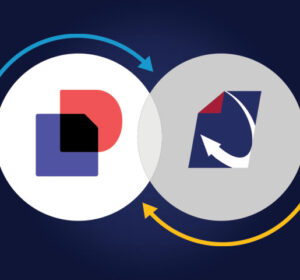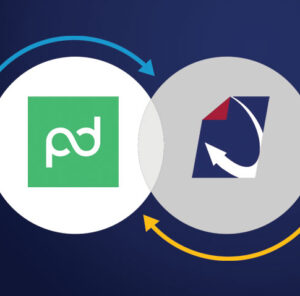Going paperless in HR does not have to be a stressful project. Here’s how to make the switch quickly and easily.

Dealing with paper documents in HR can be a real nightmare. When bulky filing cabinets start to fill up with overflowing manila folders, it becomes impossible to keep information organized. This makes finding an important document or being prepared for an audit a seriously stressful situation. Because of this, many organizations are making the switch to paperless HR processes like online employee onboarding and electronic personnel files. Here’s how to leverage paperless HR software to streamline your department and make managing employee information much easier.
It All Starts With Onboarding
Much of the documentation that is added to an employee’s folder is actually generated in the onboarding process. To avoid creating all of that paper every time a new employee is hired, electronic onboarding software has become extremely popular. New hires can review, fill out and sign all of their onboarding paperwork online. Now the question is, “What to do with those completed files?” Many HR departments are still printing it out and putting it in a paper employee file!
Electronic Files Replace Paper
Now that your onboarding process has gone paperless, it’s time to take a look at how you’re storing your personnel files. It certainly doesn’t make much sense to print your staff’s onboarding forms out after they are completed electronically! Instead, utilize an electronic filing system to make it easier for HR to store, manage and report on your personnel files.
An electronic filing system allows your team to retrieve the files they need instantly, from any where. Instead of digging through multiple levels of folders and section tabs, simple retrieve documents by various categories. For example, an electronic system allows you to pull up documents by identifiers like Department, Document Type, Expiration Date, Division, Office Location, etc. These identifiers can be configured specifically for your own HR department and ensure your files are always stored in the correct location.
You can also use your electronic file system to run reports on your documents using the identifiers mentioned above. A very common report used in HR is an internal audit or exception report. This report can be used to keep track of required and expiring documents in staff folders. For example, it can tell exactly which staff members are missing which specific required documents from their folder. The same report can tell you which staff members have a particular time-sensitive documents coming up for renewal in the next 60 or 90 days. In this way, these reports act as your automatic audit protection – always ensure all employee folders are up-to-date with all required documentation.
Digital Archiving Removes The Need For Off-Site Storage
Once your employees have been retired or terminated, there needs to be an easy way to archive them in order to comply with retention requirements. With an electronic filing system, there is no longer a need to archive your files on paper. This can free up a huge amount of space in your office as well as save your company significant savings that would normally be spent on off-site file storage. Best of all, your retention rules can be automated with an electronic system. For example, you can set your retention rules to automatically delete off personnel files 7 years after termination date, but wait 11 years before purging I-9’s. This way, your team never has to worry about time-consuming file purging projects.
A Completely Paperless Employee File Lifecycle
If you’re interested in taking your Human Resources department paperless, contact us today at DynaFile. Our paperless HR software has been helping organizations improve efficiency and cut costs for over 15 years. Scanning automation tools allow you to take the entire department paperless quickly and easily. From there, your team has instant access to files, custom audit reports to keep folders up-to-date and segmented access for HR, Payroll and Managers.
DynaFile also integrates with popular onboarding software like DocuSign and iCIMS. New hires can complete and sign all of their onboarding paperwork online. Once finished, signed onboarding documents are automatically filed back in that new staff member’s folder inside of DynaFile.
Finally, DynaFile can sync information coming from your existing Payroll system or HRIS. So, when an employee changes to “Termed” status, switches departments or even changes their name after they get married; that information can be automatically updated in DynaFile when changes are made in your Payroll system or HRIS. This way there is never any need for redundant updates. Automated retention rules can also be triggered when an employee switches status to, say “Termed”. If you would like to learn more, please contact us to see a free demo!


